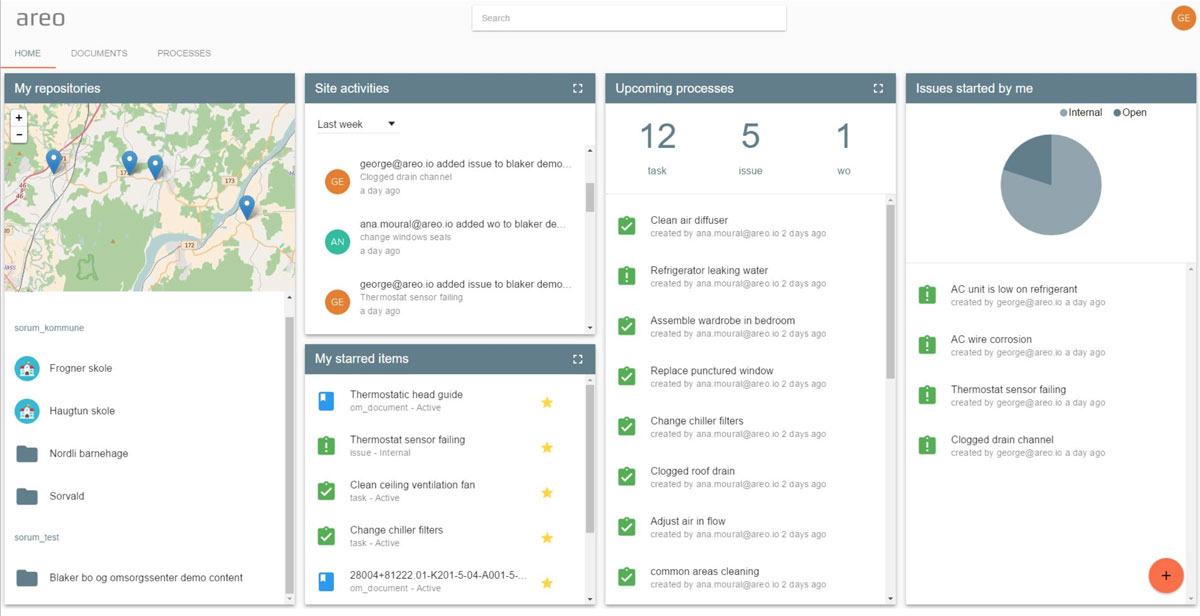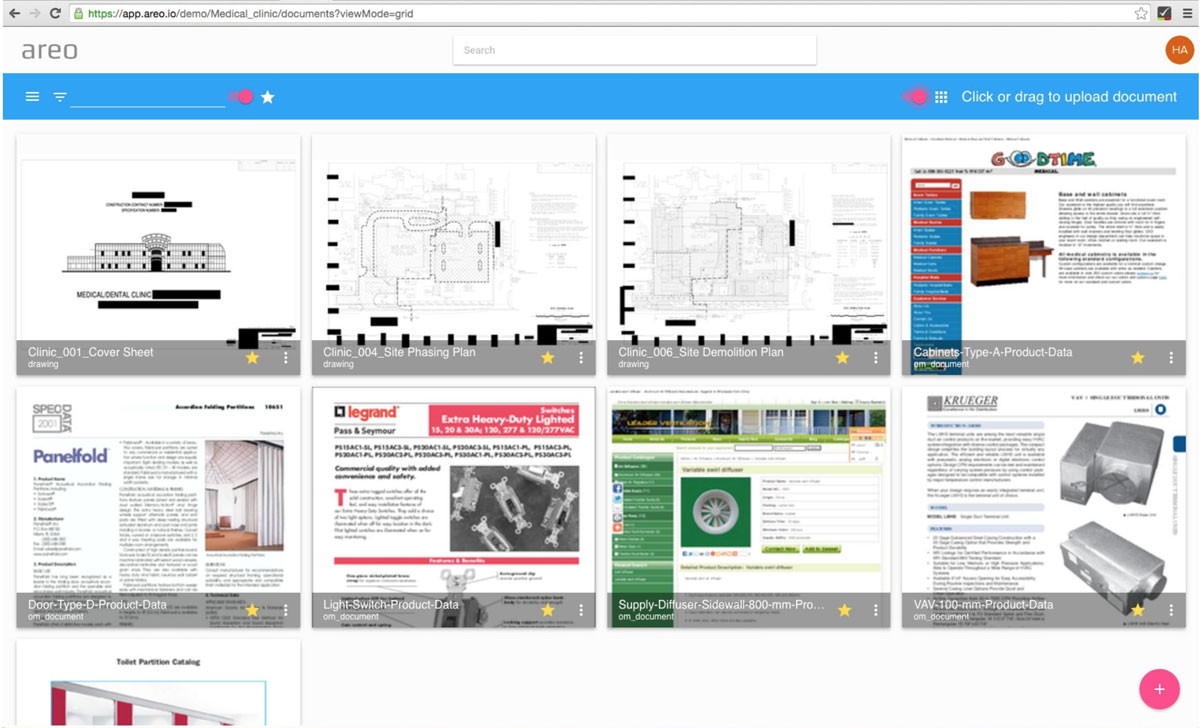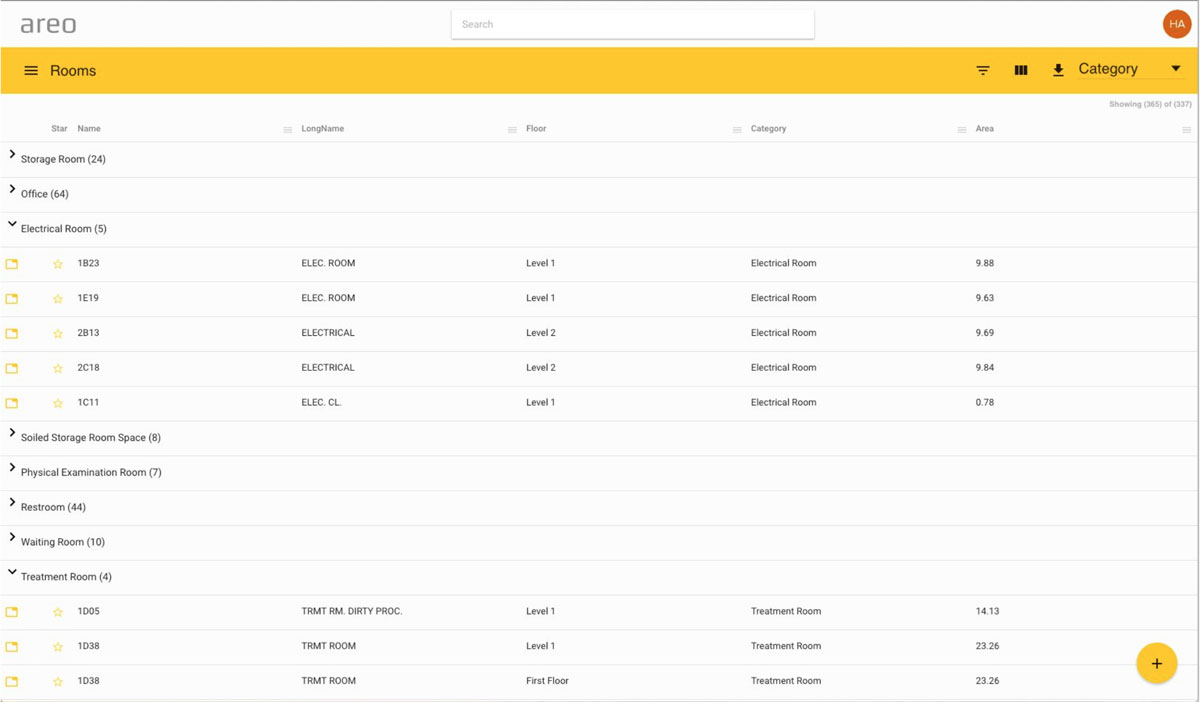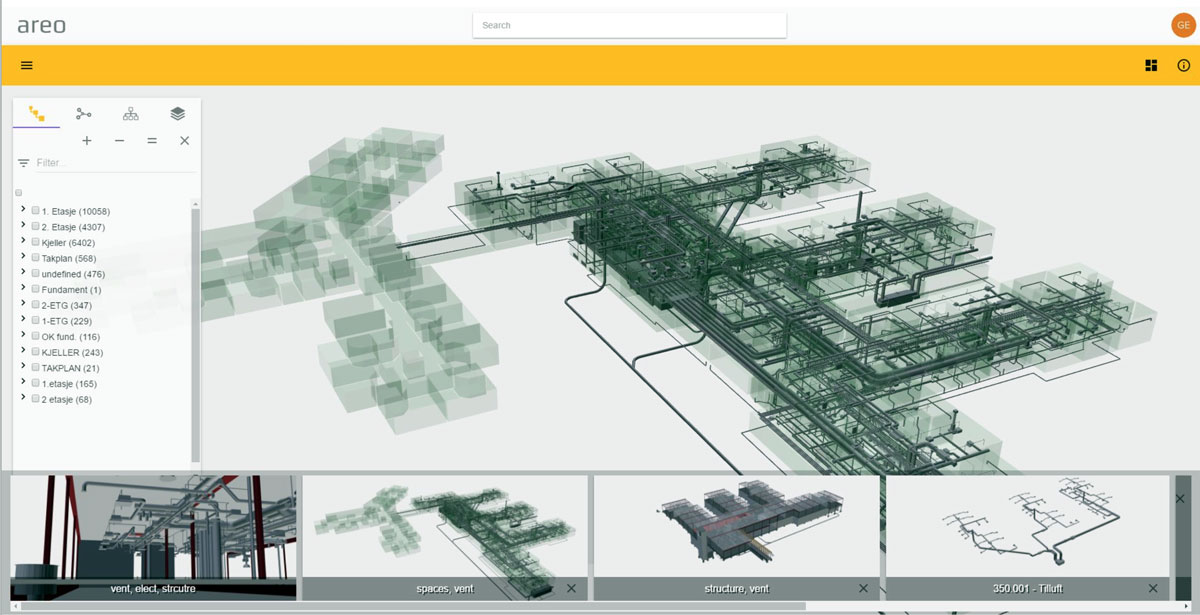I had the pleasure of meeting with Hans Kristian Grani, CEO of Areo, a software startup from Oslo, Norway. We discussed their solution to make building information models and other building data usable and useful after the construction phase.
Background
 Hans Kristian, who holds a Master of Science, talked about his background as a civil engineer and facility manager. Throughout his career, he realized how the data and information from the design and construction phases is poorly accessible during the use and maintenance of buildings. Building data is scattered in digital documents, different types of media, and different formats, including building information models (BIMs).
Hans Kristian, who holds a Master of Science, talked about his background as a civil engineer and facility manager. Throughout his career, he realized how the data and information from the design and construction phases is poorly accessible during the use and maintenance of buildings. Building data is scattered in digital documents, different types of media, and different formats, including building information models (BIMs).
He co-founded a company, Areo, with a computer scientist, Kim Lokøy. Today, the company has an agile team of five. They intend to make facility management smart, centralized, and based on life-cycle building information models. They have already tested their ideas with real clients to get a proof of concept. The experiences have been promising.
The solution
At the core of Areo’s solution is a centralized repository. They import existing data from the most common data sources and store it using open industry standards, like IFC, COBie, and BCF, with the ability to classify and tag it according to local classification systems, e.g. TFM for Norway or Uniclass for the UK. The data can be geometric, structured, or document data.
In addition to importing data, they’re going to provide for integration with other systems and the Web. For that purpose, they’re developing an application programming interface (API) that enables third-party systems to interact with their repository.


Over the data files, they’re building tools that allow viewing, markup, analysis, search, workflow, and other functions. These tools serve different types of asset and facility management processes: the handover, asset register management, assessments, and work order management.
The user interface is a dashboard-like environment that you can access on a web browser or a mobile app. The functions and items you collect on your dashboard depend on the type of tasks you perform. Based on what I saw, the interface looked clean and easy to understand. A map can also act as a user interface, which is great for owners or managers with a portfolio of many sites.


Especially impressive was the “BIM viewer” that they have developed (as seen in the title image). It allows you to view the building as an interactive 3D model, selecting what you want to see (e.g. just a certain HVAC system) and using hotspots to access all the relevant data, no matter what format it is in. Their solution generates traditional 2D floor plans from the model.


This all looked very promising, but as Hans Kristian mentioned, there are still many challenges ahead, such as:
- Moving from models to databases, thus enabling relations and complex searches
- Revisions and change controls of multi-model imports
- Viewing large, merged BIM models
- Caching and synchronizing large data sets
Even if there are still many things to develop, Hans Kristian understands that you can get 80% of the value by providing 20% of the potential functionalities.
Areo’s strengths are in the architecture of the system – a LEGO block-like approach – and the reliance on open industry standards.


How to move on
When talking about BIM in facility management (FM), Hans Kristian said that, “The whole industry is a bit experimental at the moment.” During design and construction, building information models are made “as-designed” or, at best, “as-built”. There’s still too little interest in taking into account the needs and requirements of maintenance and use. According to Hans Kristian, contractors still see that as an extra cost or a change order. Still, they have to provide a maintenance book. Why not deliver that as an intelligent building information model?
When Areo’s service becomes available, BIM managers and architects will be able to use it during construction projects. Once the project is completed, facility and property managers and field services get access to the system.


Areo has a vision to connect its service with expert systems, FM suites, legacy systems, and enterprise systems. The integration challenge will be significant, since someone counted over 80 different software solutions for FM alone.
As a solution for a clear need, I think Areo is doing a great job. I hope we’ll see their service take off in the near future.
Company website: areo.io
Images are courtesy of Areo.
View the original article and our Inspiration here


Leave a Reply